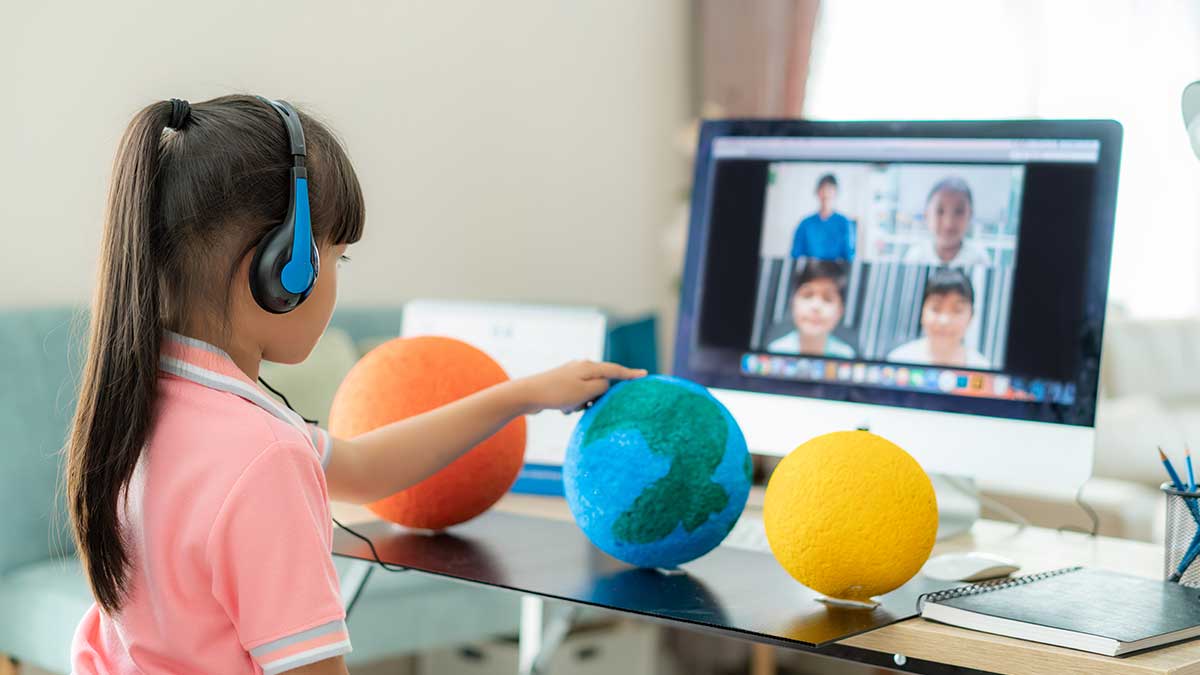
The global pandemic has forced changes in both the way lessons are conducted and the tools to be used in conducting them. Depending on the type of institute, the time of year according to the pandemic curve, and the area of location, we basically witnessed four types of teaching:
- Face-to-face teaching
- Distance learning
- Mixed or hybrid education
- Integrated teaching
Face-to-face teaching
This term refers to face-to-face lessons conducted in shared environments between pupils and educators/teachers. They are of fundamental importance for both cycle I and II schools and therefore it is important to be able to guarantee them for pupils of all ages.
Spacing and sanitisation play a central role, which is why the Ministry of Education has also allocated funds to enable institutions to equip themselves with the appropriate tools.
We are talking about: mobile chairs and desks to allow both spacing out and group work, one-piece solutions to promote containment, microphones and speakerphones to allow teachers to speak in large classrooms with spaced-out students, interactive monitors and multimedia whiteboards, video projectors to share content through dematerialisation.
Together with furniture, therefore, we see that the need for notebooks, tablets (with their storage and charging solutions) multiplies, and the use of educational software becomes indispensable.
Distance learning
Unfortunately obligatory for certain cycles and/or at certain times, or for certain types of institution (e.g. universities and training centres), distance teaching requires the use of computer technology and software that allow: on the one hand, teachers to set up and share lesson content, and on the other, students to attend and participate. This type of teaching is undoubtedly the safest from a health point of view, but just as much security is required of the IT infrastructure on which it is based, so the adoption of MDM software with the possibility of management and control by an administrator becomes indispensable: just think of the mere carrying out of tests and verifications remotely.
Social learning platforms and didactic software, on the other hand, make it possible to conduct lessons and share content between pupils, between pupils and teachers and in the conduct of group work, including interdisciplinary work.
Mixed or hybrid education
Mixed or hybrid teaching is where part of the class follows the lessons in presence while the other part attends them online. There are undoubtedly difficulties for the teacher in having to simultaneously address an audience that participates in two such different modalities, so equipping oneself with quality technological devices such as video cameras, monitors, videoconferencing systems with integrated software becomes decisive for the possibility and quality of this teaching modality.
Integrated teaching
Another thing is integrated teaching, or integrated digital teaching, which involves alternating class activities carried out both simultaneously (such as lectures and workshops) and independently (such as individual assignments, papers and other productions). This mode of teaching, while demanding in terms of the deployment of skills and resources, stimulates and fosters individual learning as each student can access the curriculum in a more comprehensive and complete manner.
